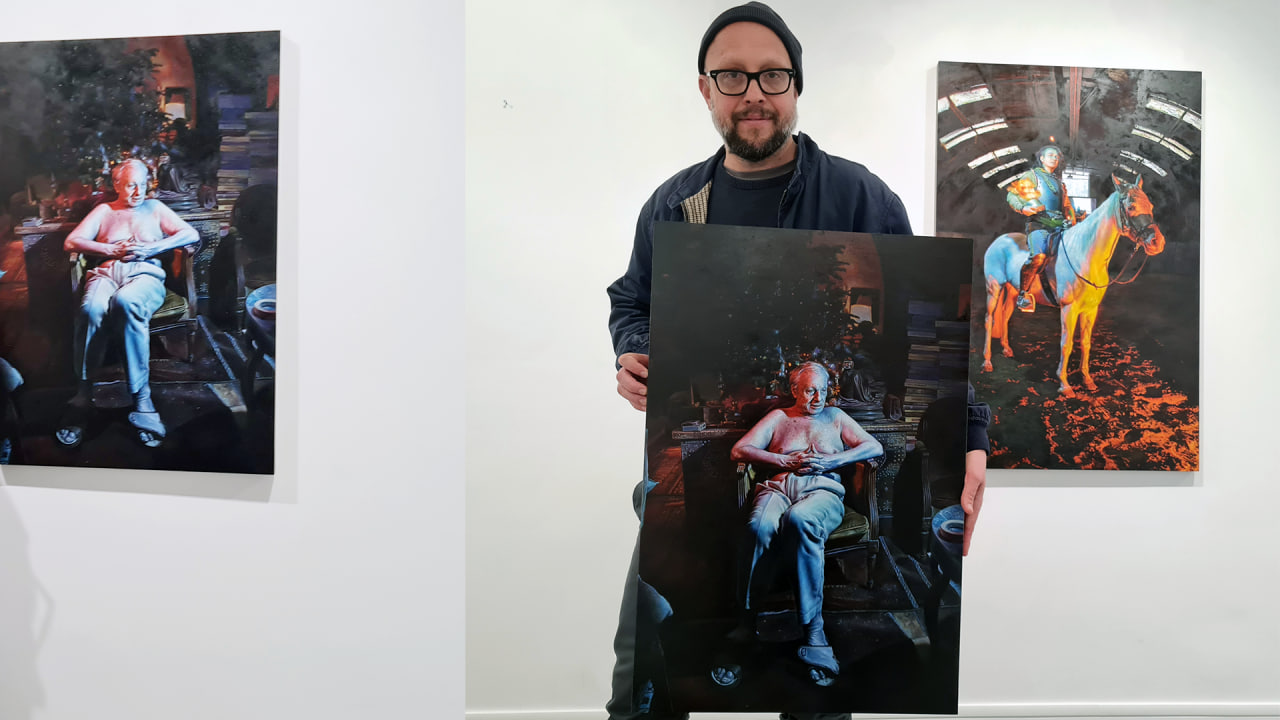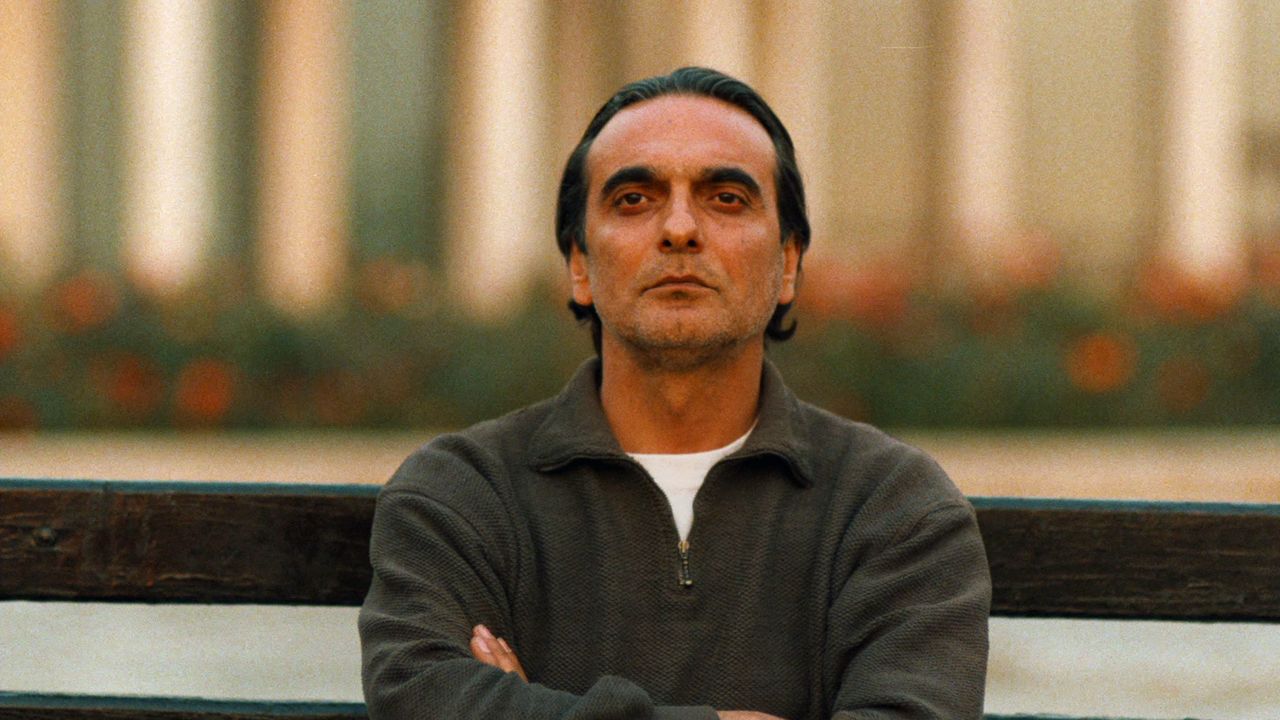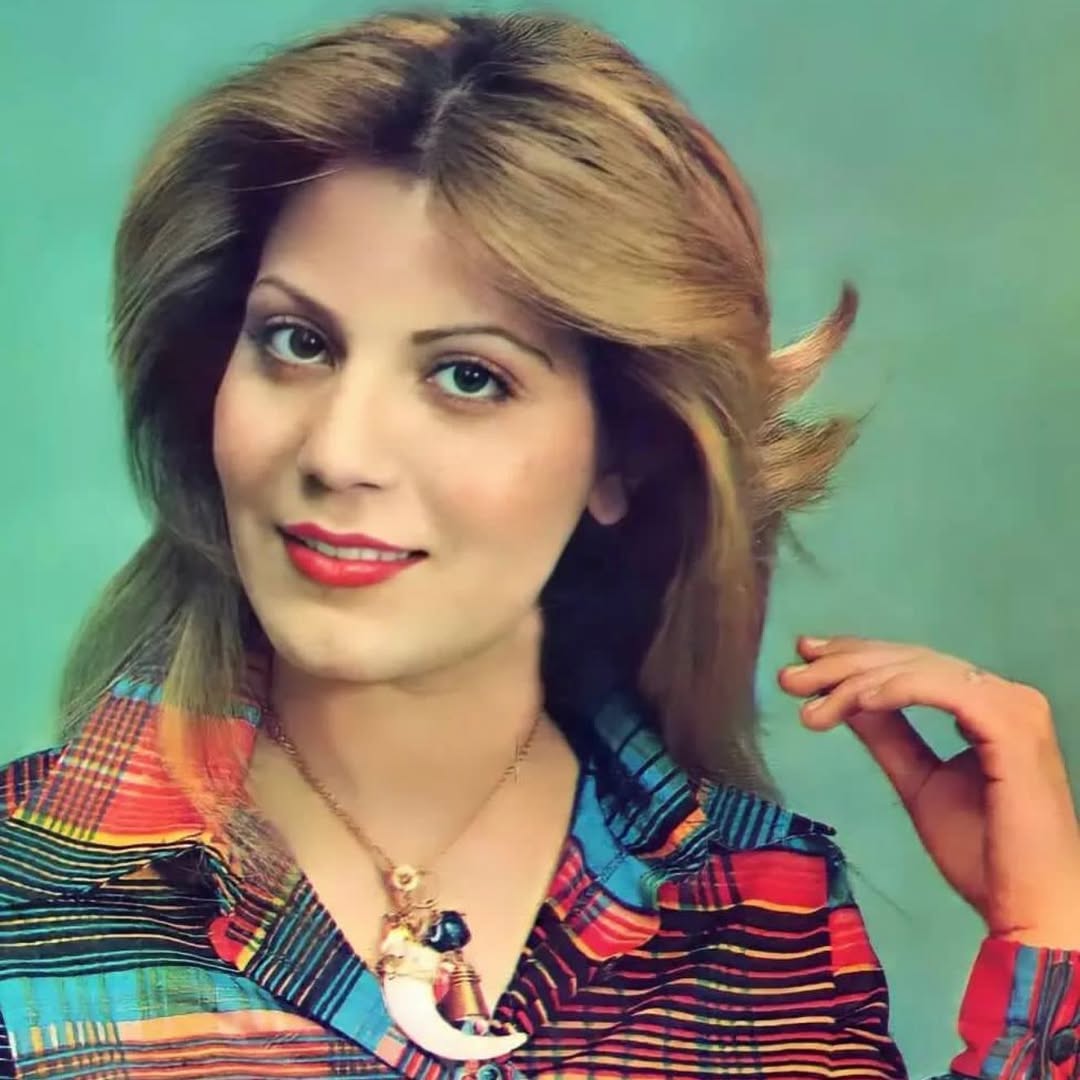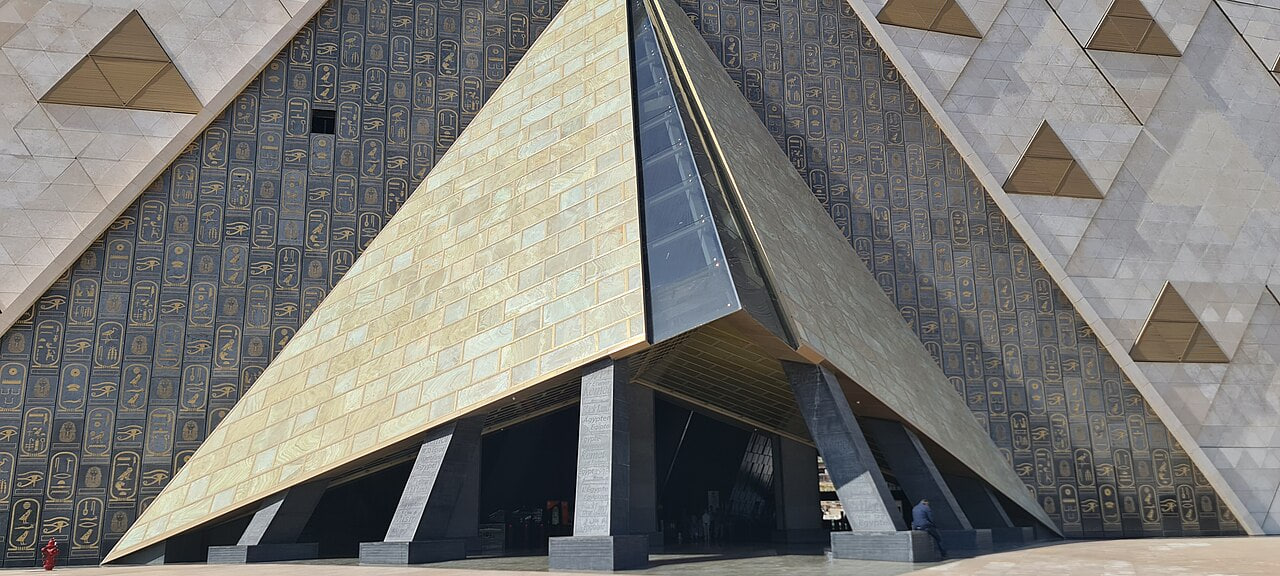By Kasra Aliha, for Honargardi
In the heart of Paris, amid the intimate architecture of H Gallery, we sat down with the celebrated French-Iranian painter Axel Pahlavi—a rare opportunity made possible during the unfolding of his monumental solo exhibition in April 2025. This conversation, led by Kasra Aliha (interviewer and producer) and captured on film by Behnood Massoumi (director of photography), offers a powerful journey through personal history, artistic vision, and inherited memory. The full video interview is available on YouTube.
Axel Pahlavi is known for his emotionally raw and stylistically diverse paintings, often merging delicate figuration with mythic, violent, or spiritual themes. But in this conversation, the canvas expanded far beyond the frame.
“So uh, my name is Axel Pahlavi… it’s a quite famous name. Everybody knows Pahlavi—and it has a relation with my work somehow. It’s funny to say that Pahlavi, in French ‘pas la vie’, means ‘not life’… So it was really strange for me to have this idiom in my brain…”
Axel Pahlavi speaks openly about his connection to the former Iranian royal family—a lineage that left quiet but lasting marks on his life and art. His father, he recounts, was adopted by Prince Alireza Pahlavi, brother of the Shah of Iran. But the story is more than royal—it’s deeply human. His grandmother, after having a child with a German soldier in post-war France, was told to abandon the baby. She refused. And when Prince Alireza embraced the child as his own, Pahlavi says, “It was not NOT life… it was LIFE.”
From this point of light, his work emerges—full of contradiction, resilience, and tenderness. His maternal lineage adds another dimension: one grandmother was a miniature painter descended from Mohammad Sa’ed, a former Iranian prime minister and portraitist of Naser al-Din Shah. His other grandmother, a French artist, taught him oil painting.
“I have two grandmothers—two great painters—in my brain. It’s my two styles. I’m schizophrenic: I have a really defined style and a really open style. They both relate to the Iranian story.”
In this way, Pahlavi carries a myriad of artistic genealogies—from Persian classicism to European romanticism, filtered through cinema, war posters, fantasy, and faith. He speaks of his mentor, the Iranian painter Massoud Behnam, a student in the tradition of Kamal-ol-molk and Fantin-Latour, and of his father, who passed along strange, poetic wisdom like: “For the thief of women, we use geranium red.”
Amid the weight of history, his attitude is unflinchingly honest, even humorous. Fame, power, legacy—he approaches them with clarity and distance.
“I’m vaccinated with power,” he laughs. “There’s always hate, always jealousy. And when you get really famous, it’s also a jail… You have to stay in this little position. Like a little car: you go on, but not too fast, not too high. So you keep your liberty. If I can keep this until I die, that’s all I want.”
The artist ends the conversation by naming three words that define his exhibition:
“Death. Life. Light.”
With deep gratitude, Honargardi wishes to thank Regan Elena, without whom this intimate and illuminating conversation would not have been possible.






